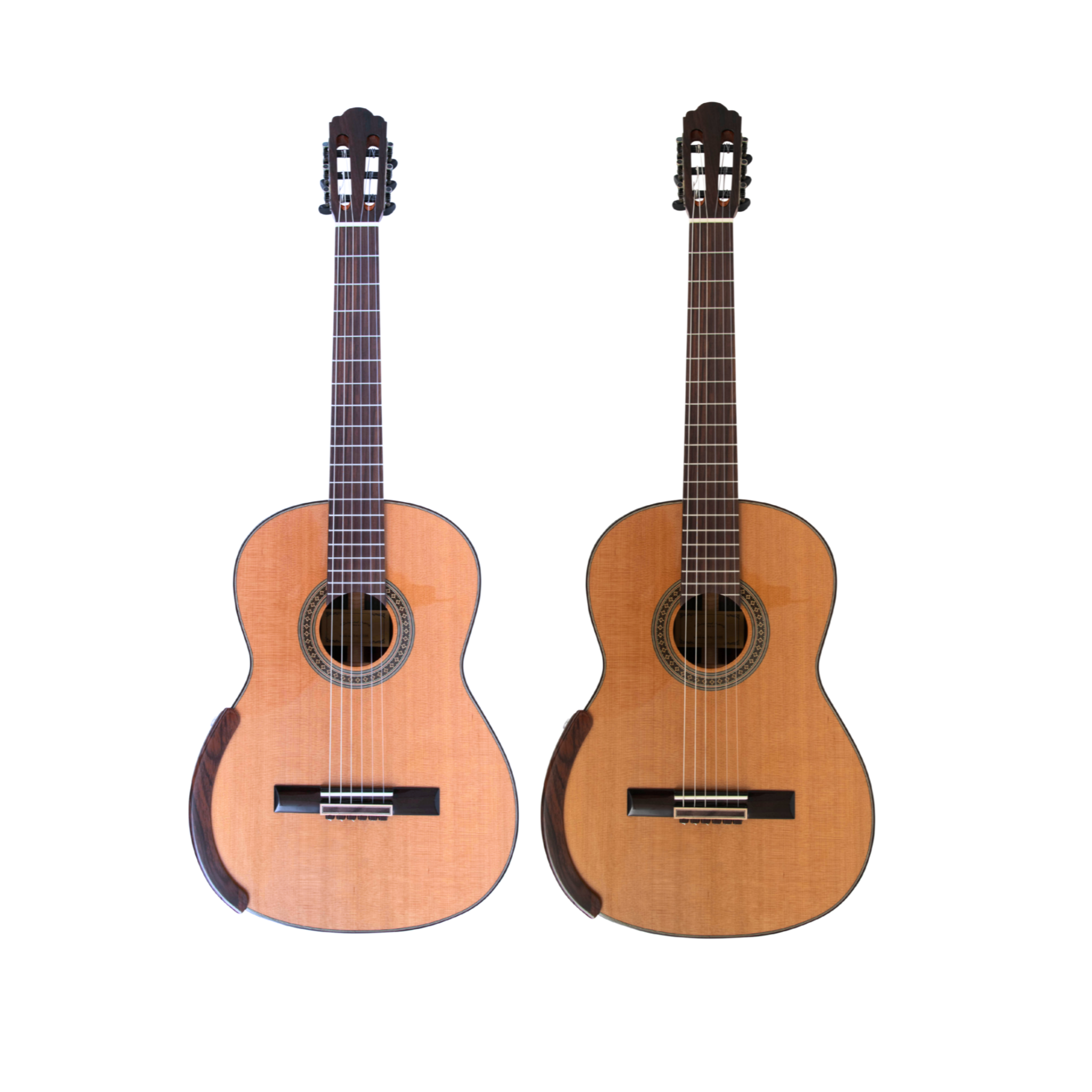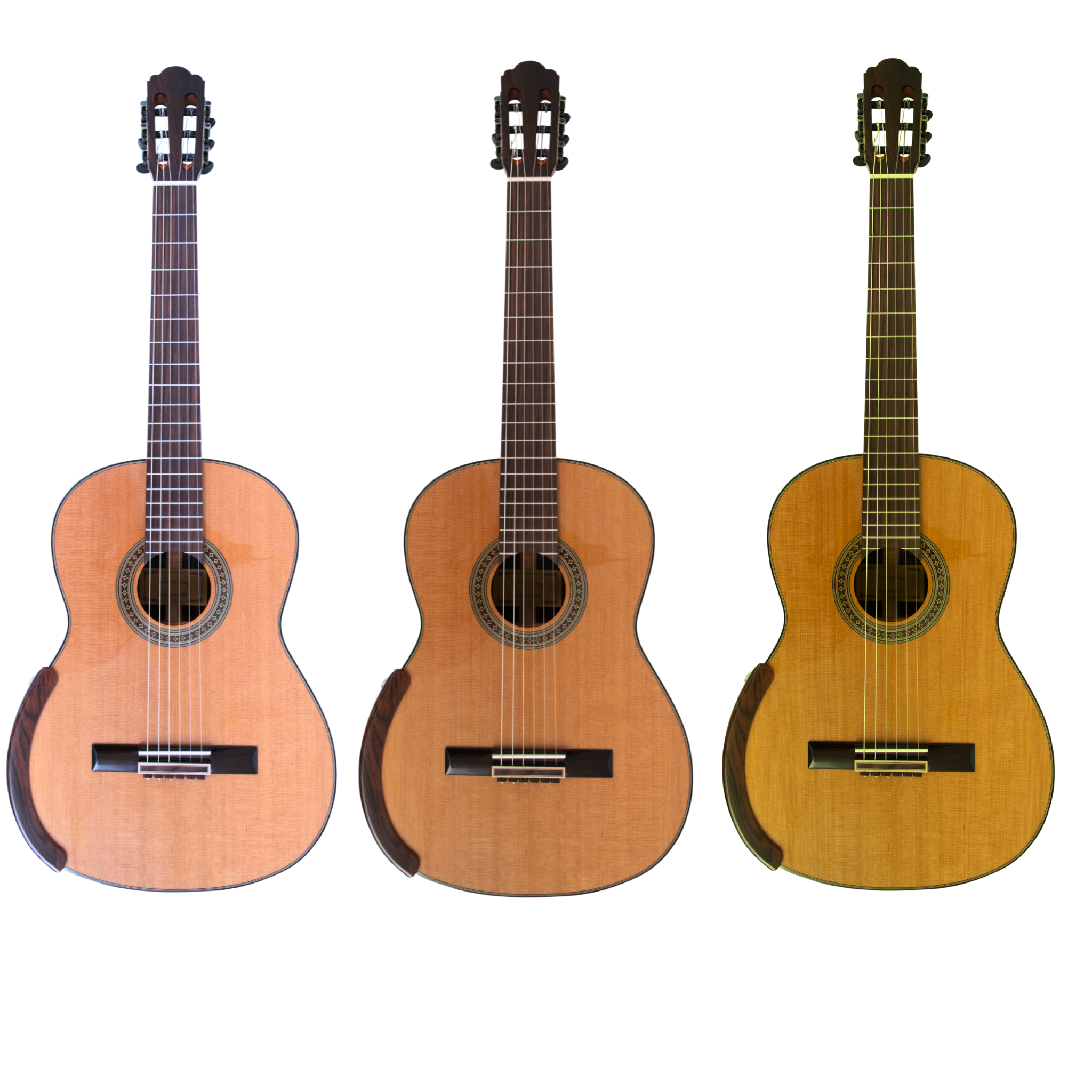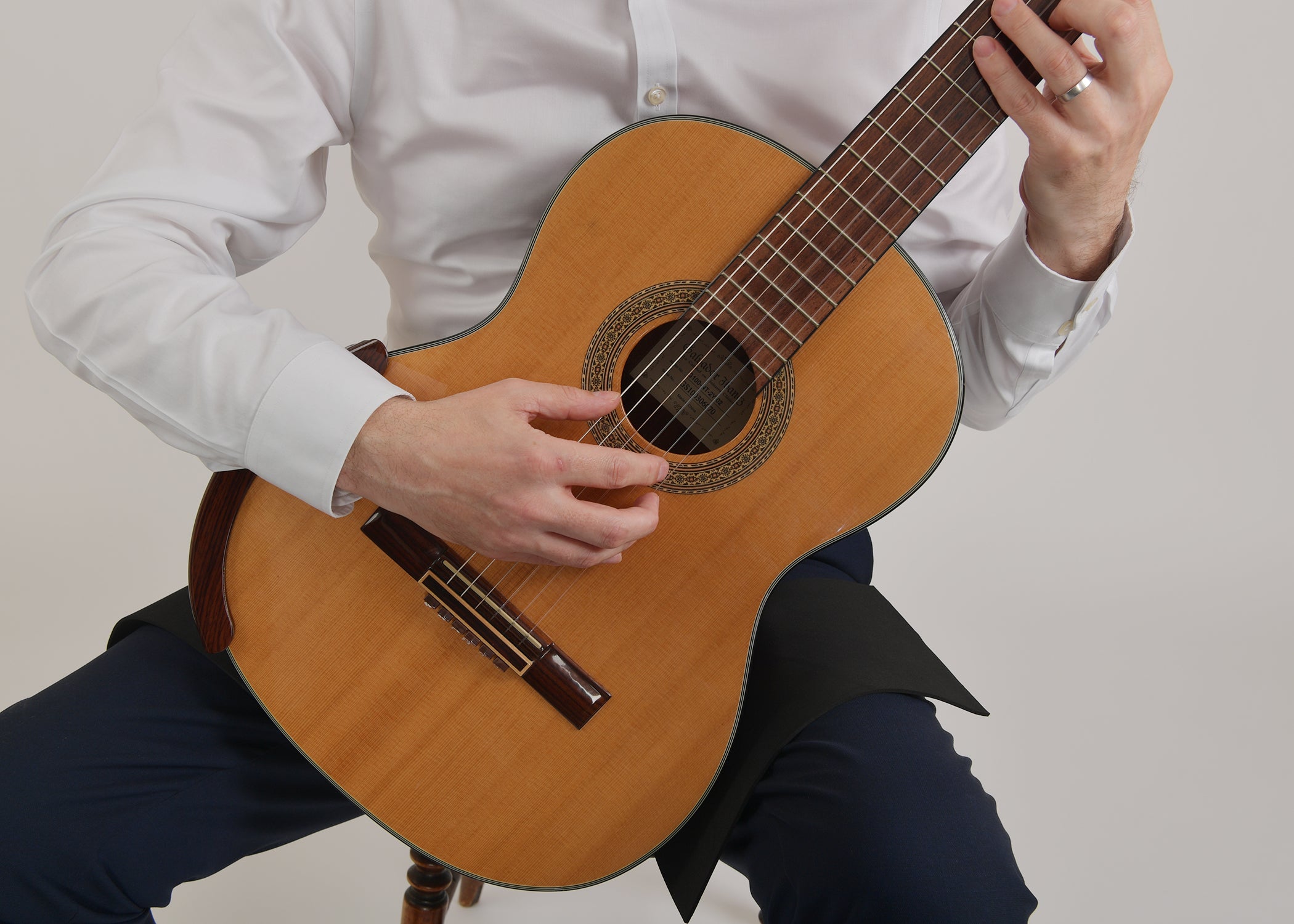Many guitar players explore both classical guitars and acoustic guitars as they develop their skills, and it’s easy to see why. The two instruments may appear similar at first glance—they’re both acoustic by design, both made from tonewoods, and both playable without amplification. But the differences between a classical guitar and an acoustic guitar are far more than cosmetic. They shape the way we play, the way the instrument feels in our hands, and the kind of sound it produces.
The classical guitar, often called a nylon string guitar, is built for a specific purpose: expression through fingerstyle playing. It typically features nylon strings, a wide flat fingerboard, and a slotted headstock. These design features help create the warm, round tone that defines classical guitar music. The neck is noticeably wider, giving the player more space between the strings—ideal for beginners, complex polyphony, and controlled vibrato. Classical guitars are most often associated with composers like Francisco Tárrega, Heitor Villa-Lobos, and Agustín Barrios, and remain the foundation for traditional Spanish and Latin American music. Flamenco guitarists also rely on nylon string guitars, usually with lower string action and lighter tops for percussive techniques like rasgueado and golpe.
On the other hand, the steel-string acoustic guitar is designed for power, brightness, and projection. Favoured in genres like pop, country, rock, and folk, these guitars are strung with steel strings under higher tension. That gives them a louder, more cutting voice—but also makes them tougher on the fingers, especially for beginners. The fingerboard is usually narrower and slightly curved, supporting chord-based accompaniment and flat picking. This style of guitar evolved alongside bluegrass and Americana traditions, with models like the Martin D-28, Gibson J-45, and Taylor 214 becoming household names for touring and studio artists alike.
The materials and construction between the two also vary. A classical guitar top is typically made of spruce or cedar, woods that respond beautifully to a gentle touch. Spruce tops provide brilliance and dynamic range, while cedar offers warmth and immediacy—each suited to different interpretations and styles. Famous luthiers like Daniel Friederich, Antonio Marin Montero, and Hermann Hauser are celebrated for their classical builds, while modern concert guitars by Gernot Wagner or Matthias Dammann showcase double-top innovation for elite performance. In contrast, steel-string acoustics often feature Sitka spruce tops with rosewood or mahogany backs and sides, built with X-bracing for strength and clarity under the tension of metal strings.
Playability is another major distinction. Classical guitars are often praised as the best guitars for beginners, especially children or adults with no prior experience. The tension of nylon strings is lower and easier on the fingers, which allows players to focus on clean tone and musicality without battling hand fatigue. Many classical guitars also come in smaller sizes, including 3/4 classical guitars, which are especially popular among younger learners. There’s also a rising demand for 3/4 acoustic guitars—slightly smaller steel-string models that offer more comfort without sacrificing tone. At Alba GB, we stock full-size and 3/4-size classical guitars tailored for comfort, tone, and long-term playability.
In terms of sound, the two instruments speak very different languages. A classical guitar produces a soft and warm tone. There’s a sense of intimacy and subtlety in its voice, shaped by centuries of Spanish and European tradition. The acoustic guitar is bolder, louder, and more rhythmically assertive—better suited for strumming and vocal accompaniment. Some players transition from classical to acoustic, or vice versa, depending on their evolving musical interests. For instance, fingerstyle steel-string players may adopt nylon string acoustic guitars for their smoother tone and to manage dynamics.
Hybrid models also exist. The nylon string acoustic guitar is designed with a classical guitar body but may include a narrower neck or built-in electronics, making it ideal for crossover musicians who perform amplified in jazz, bossa nova, or pop settings. These guitars blend comfort with stage-readiness and are used by artists who want the classical feel without giving up the playability they’re used to on steel-string necks. Some top hybrid and crossover models include the Yamaha NTX series and Córdoba’s Fusion series—both engineered for musicians who need nylon tone with acoustic guitar flexibility.
Choosing between a classical guitar or acoustic guitar ultimately comes down to what kind of music you want to play and how you want the instrument to feel in your hands. If your heart is in Spanish guitar, flamenco, fingerstyle, or expressive solo playing, a nylon string guitar is your natural choice. If you’re drawn to singer-songwriter styles, folk, country, or rock, then a steel-string acoustic guitar may offer the projection and tone you need. It’s not unusual for advanced guitarists to keep both in their collection. They’re different tools for different musical jobs.
At Alba GB, we focus on helping players find the right guitar for their style and goals. All our nylon-string classical guitars are handpicked for their tonal balance, build quality, and comfort. We carry models suitable for complete beginners, developing students, and serious performers. Our upcoming range of steel-string acoustic guitars will reflect the same level of care, featuring quality tonewoods, player-friendly necks, and thoughtful design for strumming, flat picking, and performance.
Whether you start with a classical guitar or an acoustic guitar, the important thing is to choose one that matches your musical goals and feels good to play. And remember: many great players started on one and moved to the other. The guitar world is wide—and no matter which path you choose, you’ll always find your sound.





Leave a comment
This site is protected by hCaptcha and the hCaptcha Privacy Policy and Terms of Service apply.